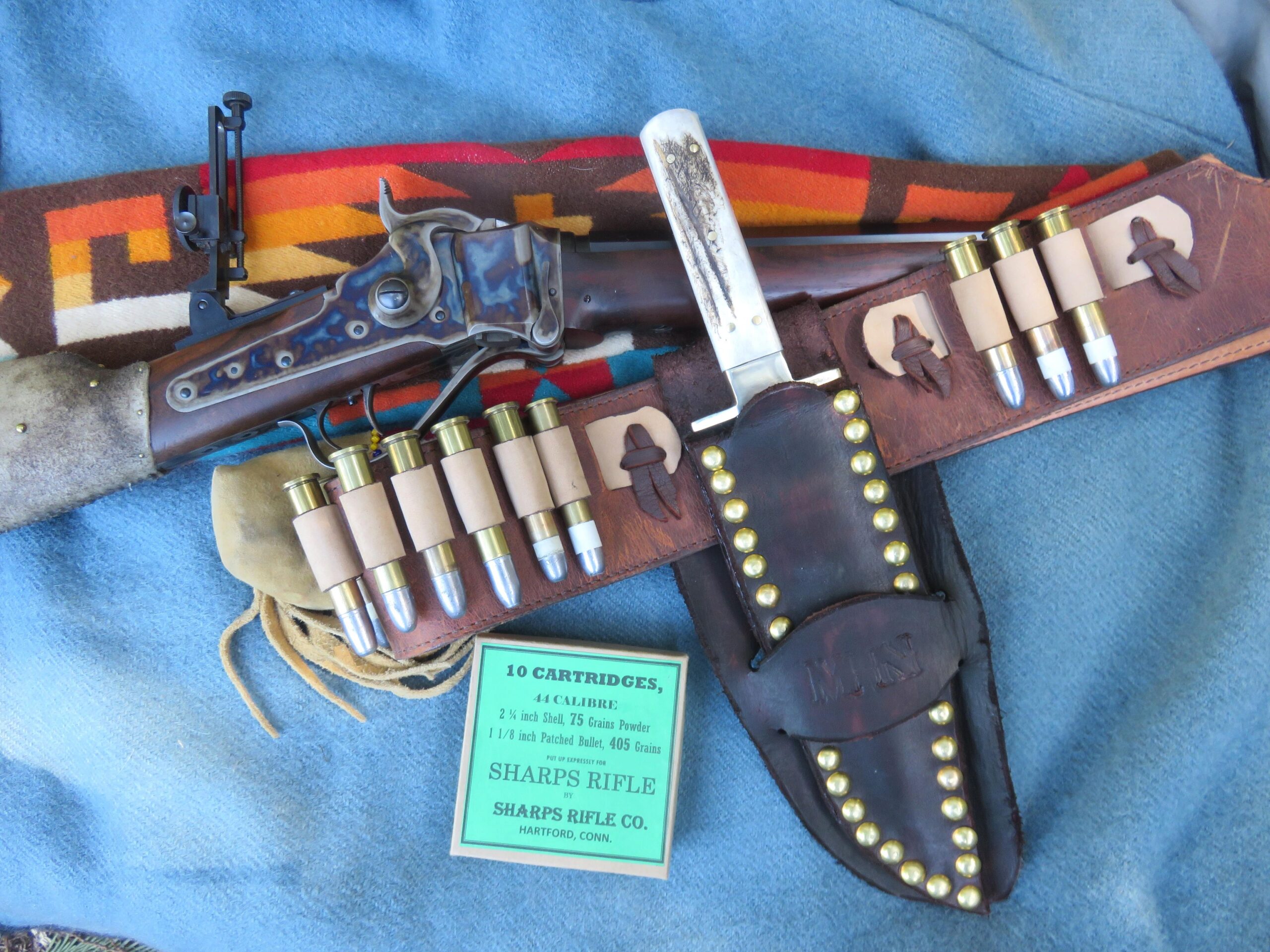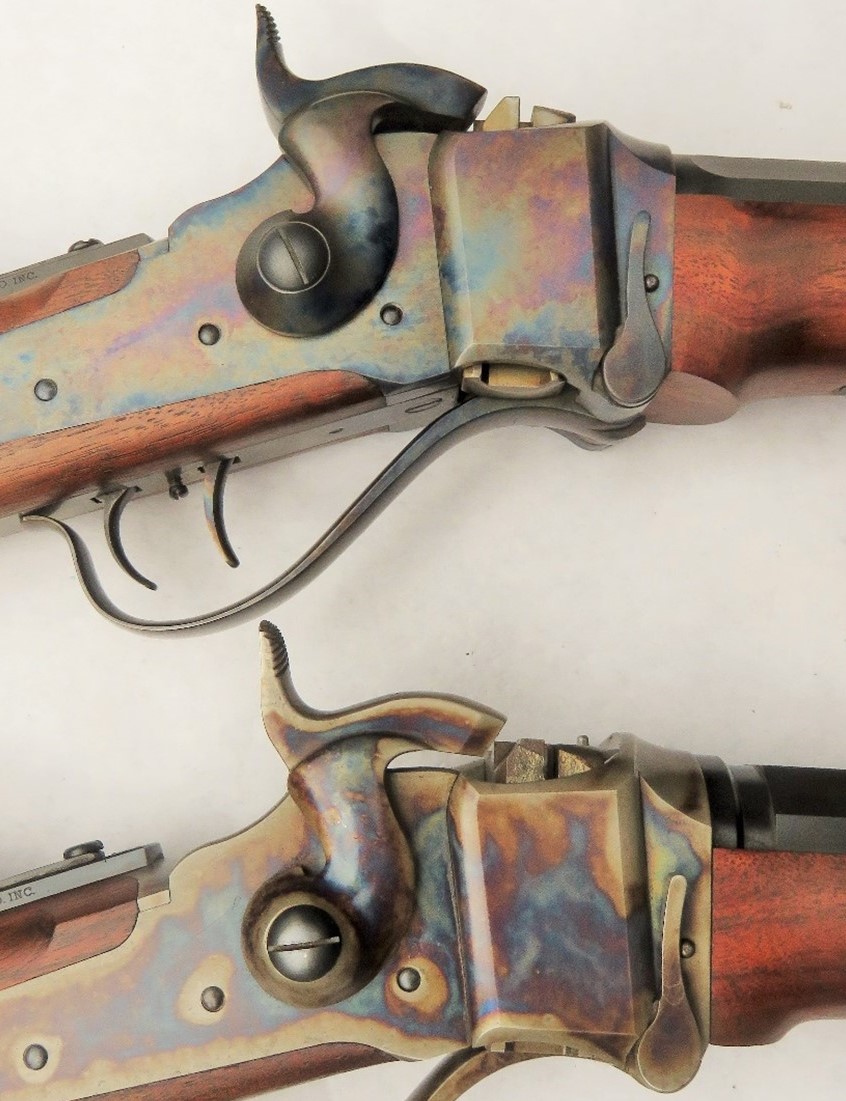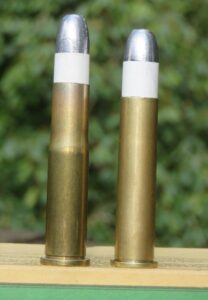
By Mike Nesbitt | Contributing Editor
When the Sharps Rifle Company moved their factory from Hartford, Connecticut, to Bridgeport in early 1876, the move was prompted to reduce costs in making the Sharps rifles.
Changes appeared in the rifles and those changes are what really gave birth to the differences between Hartfords and the Bridgeports.
One change, which they advertised after making the move to Bridgeport, was that the .44 and .50 bore sizes were discontinued as “standard calibers” but those would be available on special order. This makes me wonder why Sharps would discontinue offering the most popular caliber they had at the time, the .44/77. Maybe they knew the .45/70 would be taking over as their most popular chambering.
Sharps began chambering a few of their Model 1874 rifles for the .45/70 in mid-1875 but they had made only 41 of them before making their move to Bridgeport, where the other .45 caliber Sharps rifles were born, particularly the noted .45-2 7/8-inch Sharps, what we refer to today as the .45/110. That’s the cartridge which John R. Cook, author of “The Border and the Buffalo,” refers to as the “.45 Creedmoor” and he said that most of the Texas buffalo hunters had gone to that caliber shortly after it was introduced.

The .45 caliber went on to replace the .44 caliber in long range target rifles as well, and Sharps soon developed the .45-2.6-inch and slightly later the .45-2.4-inch cartridges, both loaded with 100 grains of powder under their paper patched bullets. Today we call those cartridges the .45/90 and the .45/100 but those titles were not “assigned” to those cartridges until rather recently.
Some .44s and .50s were still made during the Bridgeport years. I’ve seen at least one .44/77 rifle that was made after the factory was moved, as indicated by both the external features of the rifle as well as the serial number. Some .50s were made after the move too and the Business Rifle was introduced from the Bridgeport shop, with six (according to Frank Sellers in Sharps Firearms) of those rifles made in .50 caliber, .50/70s I’m guessing.

While the .44s and .50s traded places with the .45s, the .40-caliber Sharps rifles were continued without change until the .40-caliber options were increased with the addition of the straight cased versions. The .40/50 and .40/70 Bottleneck cartridges were given straight cased brothers, the .40/50 and .40/70 SS, but the bottleneck cartridges remained in production. And the .40/90 Sharps Bottleneck remained as the highest velocity Sharps round. (There is a .40/90 Straight but that was introduced after the Sharps company had closed their doors.)
Caliber choices aren’t the only thing that sway us in our choices between getting a Hartford or a Bridgeport version of the 1874 Sharps. I simply like the Hartford features better than the general Bridgeport features. And, we must understand, those are only “general” features because they refer to standard offerings which can often be changed simply by request or as added cost options. That is just as true today as it was back in the 1870s with the old Sharps Rifle Company.

Let’s mention the poured pewter nose cap which was a standard feature on the Hartford rifles. That’s awful pretty and to my eyes a Sharps rifle is practically incomplete without one. However, the pewter nose caps were discontinued as a standard feature when the move was made to Bridgeport. On the original Bridgeport rifles, and the new Bridgeport model rifles by C. Sharps Arms today, the poured nose caps are available but as an added cost option. In the old days, the poured nose cap at Bridgeport was dropped as a standard feature to reduce the costs of the rifles.
For the Bridgeports, Sharps used the Schnabel (German, for ‘bird beak’) at the end of the forearm. The Schnabels on the original rifles were not as large as what we find today on the new rifles. Some shooters have recommended cutting today’s schnabels down to be more like the originals but, of course, that could be individually done.
The standard butt stock for a Hartford model by C. Sharps Arms is the military style and was used on rifles and carbines alike during the production years of the original Sharps. Once again, that is only the standard because a shotgun butt can be ordered. The “other way around” is true too and several original Sharps Bridgeport rifles had the military butt stocks, which were standard on the Business rifles as well as the Hunter’s rifles and the carbines. What is not seen as often is an old Hartford Sporting Rifle with a shotgun butt but a very few were made.
Bridgeport stocks, speaking of today’s guns from C. Sharps Arms, have a higher comb than the Hartford stocks and that higher comb offers the shooter a much more solid “stockweld” for the cheek. That is more desired when the sights are raised for longer range shooting. And the wider shotgun butt of the Bridgeport stock doesn’t “kick” as much at the shoulder. These characteristics make shooting a Bridgeport style more comfortable, usually, than shooting a Hartford model.
Pistol grips are offered by today’s C. Sharps Arms Company but only on the Bridgeport models other than the Heavy Long-Range Sporting & Target versions of the Hartfords. On the old Hartfords a pistol grip was rarely encountered, and I do believe those were only found with shotgun butts. The original Bridgeports were more often found with pistol grips on their shotgun butted stocks. Today we see the pistol grip a common option on the Bridgeport model.

Cheek pieces are also an added cost option which are generally only applied to the Bridgeport models today by C. Sharps Arms. In the 1870s cheek pieces were rarely applied and according to Roy Marcot in his Sharps Firearms Volume 2, none of the old Sharps’ catalogs or price lists include or mention the cheek piece. Cheek pieces are included on today’s Heavy Hartford Long-Range Sporting and Target rifles.
And the crescent or “rifle” butt plate should also be mentioned. In the Hartford era of Sharps rifles, the crescent butt plates were found with some limited regularity on sporting rifles but that option seems to have disappeared after guns began to be made at Bridgeport. In general, the “rifle” butt plate is not as comfortable to shoot with as the military style butt and certainly not as nice to the shoulder as the shotgun butt.
This brings us to differences in the metal parts of the rifles made at Bridgeport compared to the Hartford versions. One of the first differences that comes to mind is the “Hartford collar” at the back of the barrel just ahead of the receiver. The Hartford collar is simply a way for the octagon barrel to transition to round before joining with the receiver. Not all of the Hartford rifles had it and it could not be applied to either the very light barrels, such as today’s standard weight barrels, or to the very heavy barrels, such as today’s #2 or heavier barrels. When the Sharps Rifle Company moved to Bridgeport, the Hartford collar was basically discontinued in favor of the “tulip” transition from octagon to round. Perhaps cutting the Hartford collar took some extra machining to make and extras were being reduced.

Hammers on the Bridgeport models are slightly different from the Hartford versions too. The Hartford hammer had the right side, at the top of the hammer’s arm, with two flat planes. First, the side of the hammer was milled straight but then it had an angle near the nose where it angled in, toward the transfer bar for the firing pin. Bridgeport models have the single flat plane, which was simply straight, tapering from the back all the way to the nose of the hammer. The straight plane on Bridgeport hammers simply reduced the machining by at least one step, saving time as well as a little money. On today’s rifles from C. Sharps Arms both hammers are reproduced and generally fitted to the respective versions of the 1874 rifles.
At the old Hartford shop, metal pieces such as the barrels and other non-color casehardened parts were blued by a chemical process. That was done in four days. After moving to Bridgeport, according to Frank Sellers, the bluing process was reduced to just three days. The result was that the Hartford rifles received a more lasting blue. This is not reflected in today’s rifles by C. Sharps Arms.
Please remember that all of the differences mentioned are generalities. When you begin talking about a specific rifle, either one of the old Sharps rifles or a new one just being ordered today, things can really change because all Sharps rifles, old or new, are or were made just one at a time. Even so, it is nice to know what those generalities were because they can make a difference in authenticity when ordering a new rifle.




